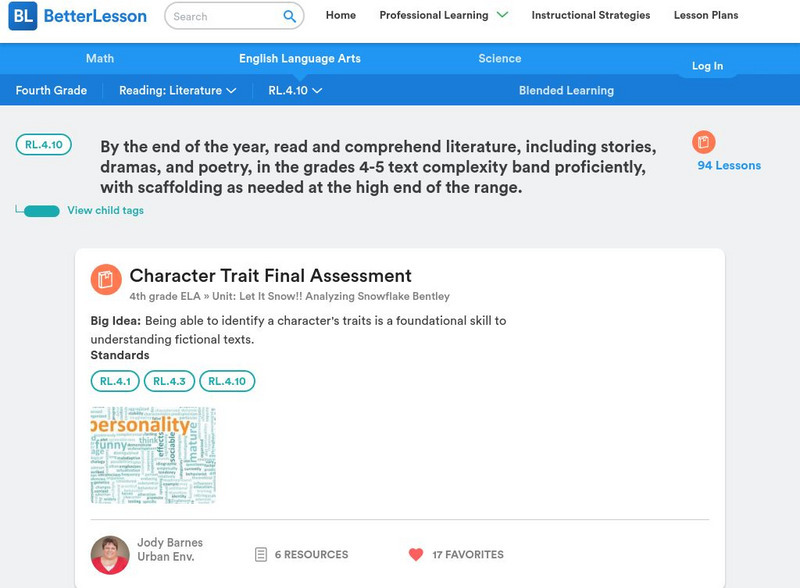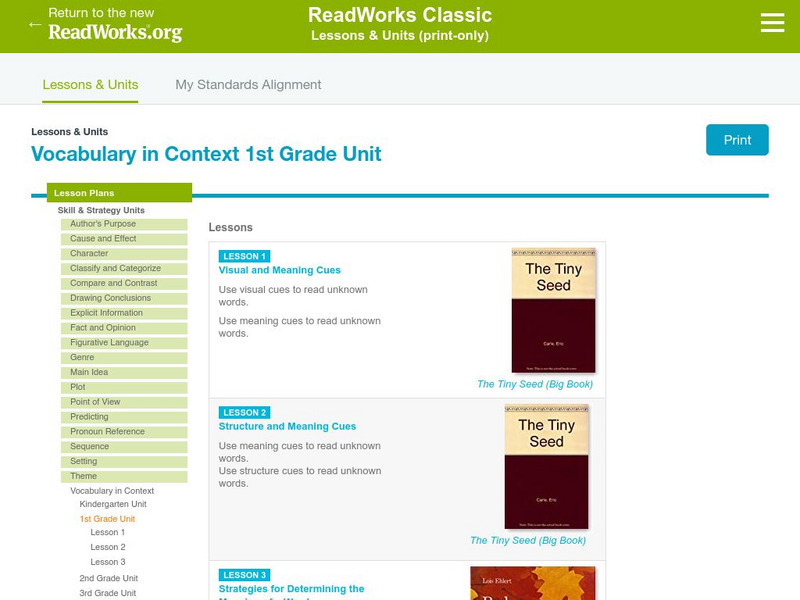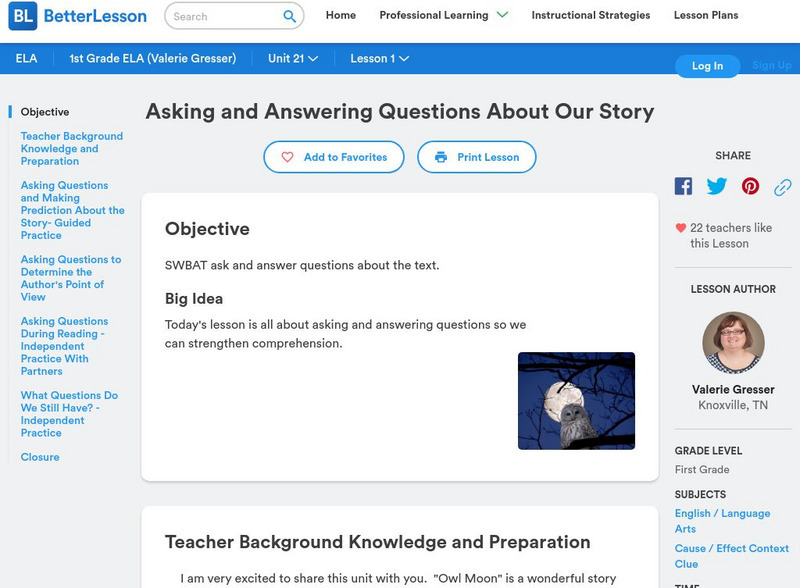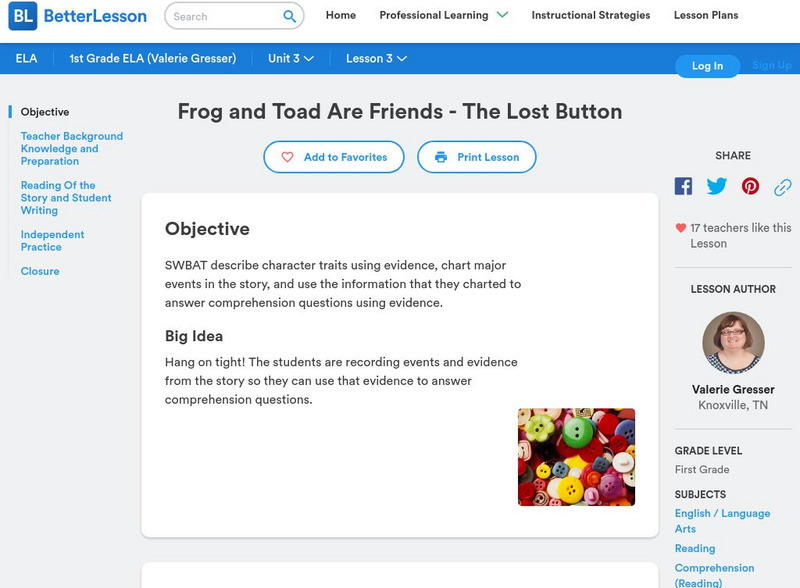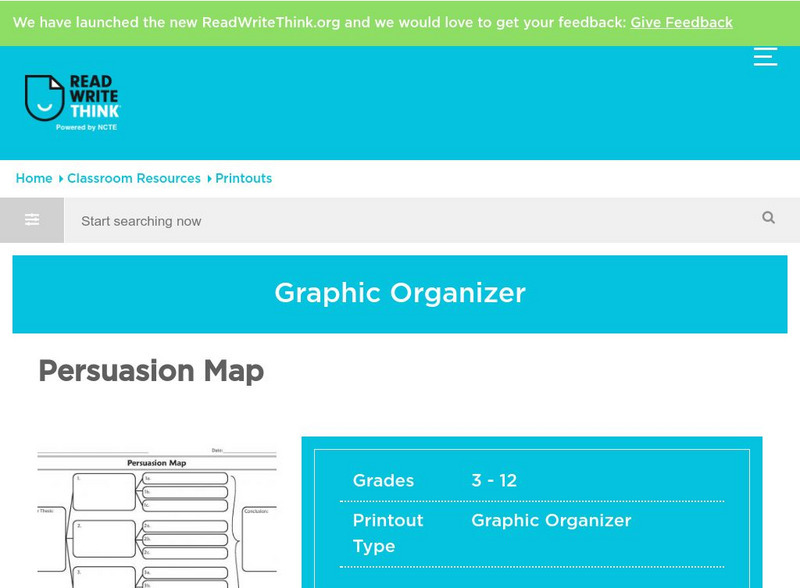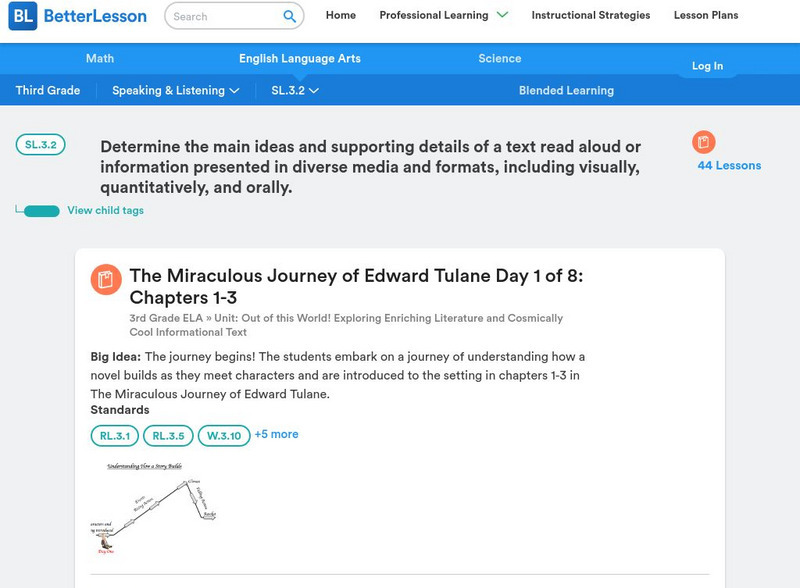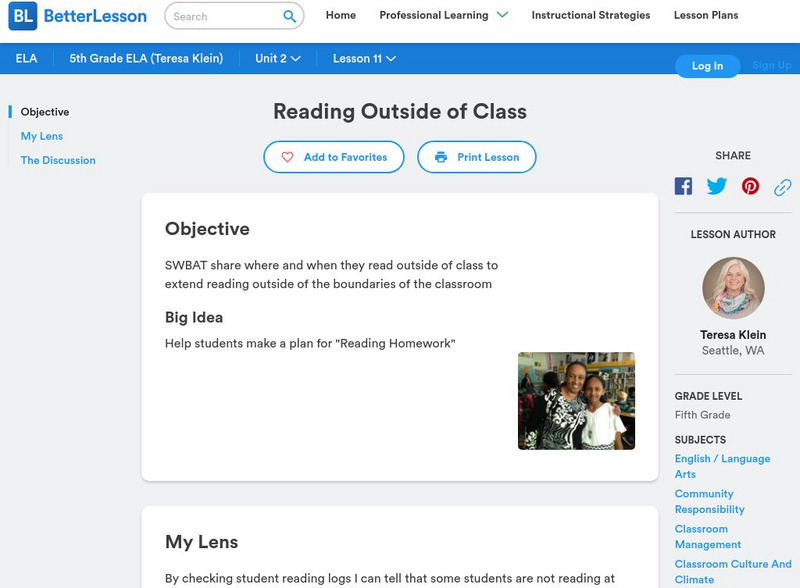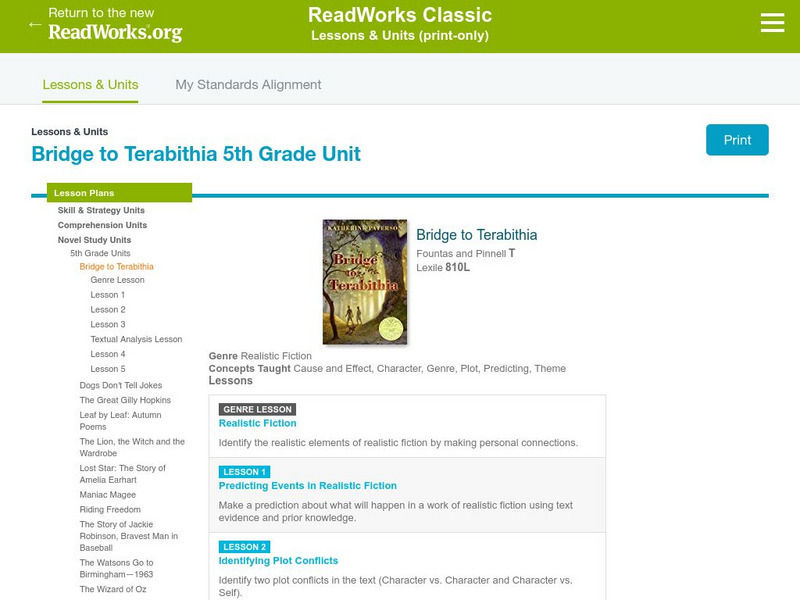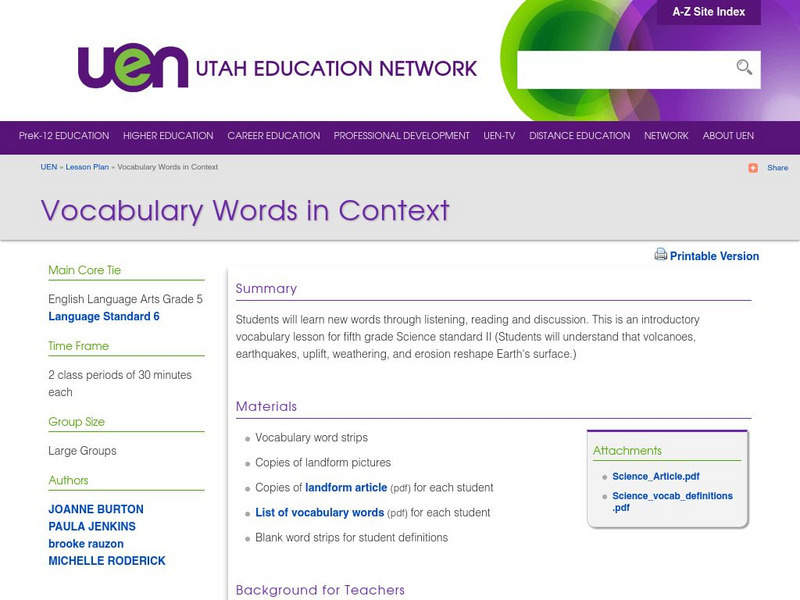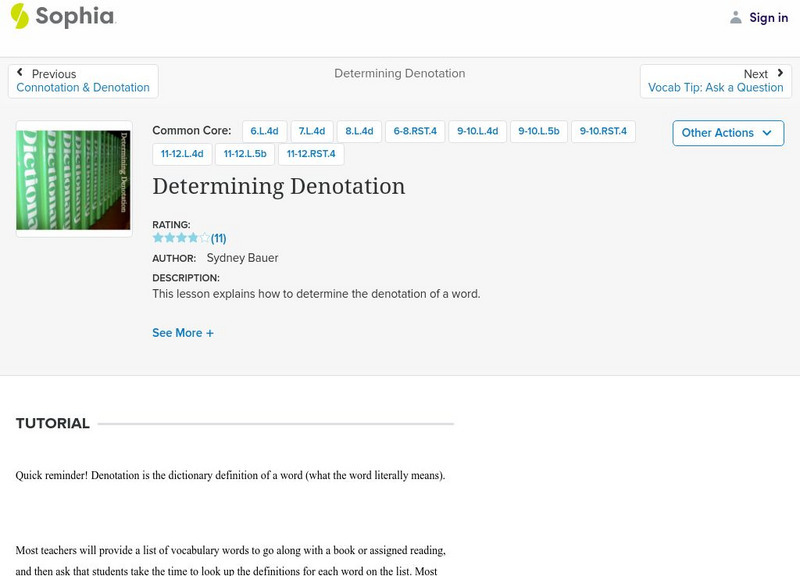Better Lesson
Better Lesson: Rl.4.10: Read and Comprehend Literature in Grades 4 and 5
Links to 94 lessons and activities that build student skills in standard RL.4.10: By the end of the year, read and comprehend literature, including stories, dramas, and poetry, in the grades 4 and 5 text complexity band proficiently,...
Read Works
Read Works: Vocabulary in Context 1st Grade Unit
[Free Registration/Login Required] This website provides a series of three lesson plans designed to teach students to use visual, meaning, and structure clues separately and together to determine the meaning of unknown words. Lessons are...
Better Lesson
Better Lesson: Asking and Answering Questions About Our Story
Today's instructional activity is all about asking and answering questions so we can strengthen comprehension.
Better Lesson
Better Lesson: Frog and Toad Are Friends the Lost Button
In this lesson, students will record events and evidence from the story "Frog and Toad Are Friends" so they can use that evidence to answer comprehension questions.
ReadWriteThink
Read Write Think: Persuasion Map
A printable graphic organizer for students to use when writing on opinion or persuasive essay. Directions on how to use this type of graphic organizer as well as lists of teaching ideas, lesson plans, and other resources are also...
Better Lesson
Better Lesson: Sl.3.2: Determine the Main Ideas and Supporting Details of a Text
Links to 44 lessons and activities that build student skills in standard SL.3.2: Determine the main ideas and supporting details of a text read aloud or information presented in diverse media and formats, including visually,...
Better Lesson
Better Lesson: Sl.4.1a: Come to Discussions Prepared
Links to 36 lessons and activities that build student skills in standard SL.4.1a: Come to discussions prepared, having read or studied required material; explicitly draw on that preparation and other information known about the topic to...
Better Lesson
Better Lesson: Rl.3.6: Distinguish Their Own Point of View
Links to 22 lessons that focus on skills within third grade reading standard RL.3.5: Distinguish their own point of view from that of the narrator or those of the characters.
Better Lesson
Better Lesson: Lesson: Reading Outside of Class
For this lesson, a teacher describes the steps being taken to encourage students to become independent readers outside class time.
Better Lesson
Better Lesson: Movie vs. Book
In this lesson, students compare the video version of the teleplay "The Monsters are Due on Maple Street" to the actual teleplay. (A teleplay is a play or script written for television.) The links to media in this lesson no longer work,...
E Reading Worksheets
E Reading Worksheets: Summarizing Worksheets and Activities
In this instructional resource, students will learn more about summarizing texts. Worksheets and PowerPoint lessons are provided to reinforce understanding about ways to summarize nonfiction texts and to identify main ideas. This module...
ReadWriteThink
Read Write Think: Introducing Each Other: Interviews, Memoirs, Photos, Internet
This lesson plan is designed to teach various methods students can use when researching background information on one another in order to introduce each other in written and oral form.
E Reading Worksheets
E Reading Worksheets: Point of View Activities
This learning module provides assorted activities for teaching and reviewing the concept of point of view with students. The following activities are provided: point of view comic strip; point of view flash cards; point of view practice...
E Reading Worksheets
E Reading Worksheets: Patterns of Organization: Cause and Effect
This learning module provides an explanation of the cause and effect text structure. An explanation of the cause and effect text structure is provided, and a video tutorial lesson [0:53] provides additional examples to supplement the...
Read Works
Read Works: Bridge to Terabithia 5th Grade Unit
A Grade 5 literature study unit for the novel "Bridge to Terabithia" by Katherine Paterson. The concepts covered include cause and effect, character, genre, plot, predicting, and theme.
Sophia Learning
Sophia: Referencing the Author's Purpose
This lesson explains how to reference an author's purpose when answering a reading comprehension question. This tutorial shares an audio version of the lesson's content. [3:14] RI.11-12.6 Eval Purpose, Rhetoric, Style
Better Lesson
Better Lesson: /C/ Like Columbus
A historical figure helps students recognize a specific initial sound, the hard /c/.
Education.com
Education.com: Rl.1.2 Worksheets
[Free Registration/Login Required] Choose from a variety of worksheets for students to practice the common core skill of understanding a central message or lesson.
Thinkport Education
Thinkport: Translating Qualitative & Quantitative Details: Climate Change
In this science-themed literacy lesson, students read for and differentiate between qualitative and quantitative information.
Other
Literacy Design Collaborative: Partner Retelling of Narrative Text
For this lesson, the teacher reads a story aloud and learners work with a partner to retell the story using sentence starters. Includes downloadable poster.
Utah Education Network
Uen: Vocabulary Words in Context
In this lesson, 5th graders will use context clues as they learn new science vocabulary words through listening, reading and discussing the new content. The terms are associated with the reshaping of the earth's surface.
Sophia Learning
Sophia: Determining Denotation
This lesson explains how to determine the denotation of words; it defines denotation and offers a plan of action: look up the word in the dictionary, read all meanings paying attention to parts of speech, and compare each of these...
